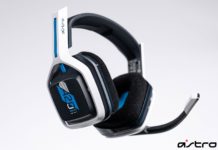In a world
engulfed in turmoil, a few young heroes must rise to save humanity from
certain death. MS Saga is a new chapter in the Gundam series, giving players
the chance to become attached to original characters and super-deformed
versions of their favorite Gundams. MS Saga is also the first time Bandai has
turned its classic mobile suit adventure into a full-fledged RPG.
Being a game
with so much promise, a lot of expectations were created before its release:
great storytelling, unforgettable music, and exciting battles. Does MS Saga
deliver?
The story
begins with Tristan and Fritz, two orphans who lose the place they call home
in a vicious, unexpected attack. Two men are responsible for the attack,
though it’s unknown who they are at the time. Both were protected by the
safety of their mobile suits. Unfortunately for them Tristan survived the
attack. They’ll later laugh it off, thinking he’s the one they let go. But
they shouldn’t have. Tristan saw what happened. He knows what the suits looked
like, and he will stop at nothing to hunt them down.

“Stop
at nothing? Those are, some, uhh…pretty…strong…words.”
Emotion is
built with brief flashbacks of Natalie (who is referred to as "Miss Natalie"),
the woman who watched over the children at the orphanage before it was
destroyed. She was killed in the attack, as were several of the children.
Moments like
these all but contradict the rest of the dialogue, which is corny at best. I
know that most RPGs, especially Japanese RPGs, never seem to convey certain
feelings properly. But to hear the characters speak so sadly one minute, then
cheerfully the next really takes away from the pain they’re supposed to be
feeling. It’s not that I wanted this to be a depressing RPG, but if bad things
are happening, why should anyone be smiling? No one smiles at war,
regardless of how confident they are in their mission to set things right.
Nothing can bring back those who are lost.
The story
continues to contradict itself throughout the game, going from moments of
sadness to moments of annoying quirkiness. It also lacks necessary explanation
at times. Aeon is a cute girl who mysteriously appears after a boss battle.
That makes sense – we need a princess to save. But we have no idea who she is
at the time she’s introduced. Tristan wants to save her of course, which again
makes sense.
She can’t
remember her past, and after a few battle decides that she absolutely must
join your party. Yes, we needed more characters, but isn’t there a better way
the story could have ushered her in? I know memory loss can be selective, but
for a girl who doesn’t know much she sure can fight. Tristan objects to her
joining the fight, though it doesn’t take much for her to change his mind.

Up to three
characters can join your party in battle. Enemies are not as limited. Early on
you’ll encounter combinations of three tanks and two mobile suits, five tanks
or even five mobile suits. Combat is strictly turn-based, and is about as easy
to learn as humanly possible. Attacks are very limited. Magic is nonexistent
since Gundams don’t have the power to cast spells. They do, however, have
techniques and boost attacks that they can learn.
Standard
attacks may be executed at any time during that character’s turn. Each
character is limited to one action (attack, defend, etc.) per turn. Attacks
can be ranged with gun power, or up close with the swipe of a glowing sword.
Both have their purpose and unfortunate downsides – melee attacks are strong
but can be countered; ranged attacks are safe but deal a weaker blow.
Many of the
standard attacks can receive a power increase by using the Boost feature.
Boost drains energy (EN) points, which are acquired after every turn. Some
weapons require energy and could drain your EN points as fast as you get them.
Should you choose to stock up by using EN-free attacks, the Boost feature will
become available. Besides inflicting more damage, some Boost attacks also
reach more enemies.

Techniques
are your third option, and they’re not just for enemies. One of the first
techniques learned is Repair, which is essentially this game’s version of
Cure. It heals a small amount of your ally’s HP. Other techniques let you
reduce your enemy’s speed, attack, or defense capabilities, among other
things.
In a great
RPG, these standard, tried-and-true features are only the beginning. As the
game progresses it’ll branch off into new territory, introducing new kinds of
attacks, or a new style of combat. MS Saga does neither. You get to upgrade
your mobile suit with over 200 parts, a nice feature that’s far from unique.
Let’s not forget about the many mobile suit RPGs that have already mastered
this concept – games like the original Xenogears for the PSone. Wow, the PSone.
That game came out eight years ago. It makes me wonder why MS Saga, having had
the benefit of learning from past successes and past mistakes, isn’t a bit
more high-tech.
The way in
which weapons are equipped is somewhat interesting, though it does nothing to
enhance the battles or their challenge (which isn’t very high). Each suit has
a grid where weapons can be equipped. If the weapon exceeds the size of the
grid that Gundam may not use it. The same is true if you have too many weapons
equipped – you can’t go outside the grid. Although I would have preferred
otherwise, in keeping with the theme of the series, you may not equip more
than one sword at the same time.

The
equipment grid.
This limits
your attack options, but there’s only one circumstance in which this becomes a
problem. Some enemies are resistant to certain elements. If all of your party
members are equipped with a fire-based weapon and that’s the element your
enemies are resistant to, you won’t be able to kill them. You can attempt to
retreat, but there’s no benefit in doing that outside of saving your Gundam’s
metallic skin. Techniques may be used to intervene (Grenade works pretty well
on the weaker enemies), but that’ll drain your TP (technique points) really
fast. TP is not easily retained. Whereas HP can be recovered at save spots and
by using cheap items, TP may only be recovered by staying at inns. There are
rare, expensive items that replenish TP as well, but like the Mana Point
recovery items in magic RPGs, I rarely use them. I’m always worried that if I
use them now, I won’t have them when I really need them.
There are
two kinds of encounters in this game: random and location-based. Random
encounters can happen any time at almost any location. They don’t occur in
towns, because as every role-player knows, towns are the safe havens where
everyone gathers after a grueling battle. But they can occur everywhere else:
on the world map, in battle locations, and anywhere else that isn’t inhabited
by allies.
Random
battles lead players down the road of repetition. There isn’t much variety in
the design or attack style of your opponents, limiting the amount of fun that
could’ve been had during these random encounters. It gets to the point where
you start to wonder, "Didn’t I just kill that guy five minutes ago? And
several of his clones five minutes before that?" This is a trait of most
random encounter RPGs. I’m willing to accept a little repetition.
But I did
not appreciate enemies that had the power to poison my party members before I
had the ability to cure them. I was without cure items at the time. I had yet
to learn the acid cure technique. And on top of that, my TP was running low.
This wasn’t cool. My characters’ health decreased with every step. I could
heal them all I wanted, but I knew eventually I’d run out of repair kits. It
was time to head back to the nearest village.

This was not
an uncommon occurrence. You’ll have to head back a lot, which again I am used
to doing, but it just adds to the repetition. Random encounters don’t feel all
that random when the enemies (and the experience of killing them) repeat
themselves. It’s a series of motions you’ll go through until the end or until
you’ve had enough, whichever comes first. Musically MS Saga has a few good
moments, but the voice track feels incomplete. Only some of the story
sequences have voice-overs, most of which aren’t any better than the average
anime you see on G4 or Cartoon Network.
For me,
adding voice is an all-or-nothing risk. It has to be taken seriously. Every
character must sound the way you’d expect. They must say things appropriately
– the way a professional actor would in a movie or on TV. If they’re sad, I
must believe that they’re sad. If they’re happy, they should show it, and
there should be a good reason for it.
At the very
least there must be continuity. If a game can’t achieve that, then it
shouldn’t attempt to have voice-overs at all. I grew up playing RPGs where
voice-overs were not possible, and I still loved them. If done right, that’s
generally the best way to go.
|
|
Gameplay: 6.4
Simplistic,
turn-based repetition. MS Saga is an RPG for beginners with patience. The act
of attacking, defending, and unleashing special techniques is rather simple,
plays out relatively slow, and rarely does anything that could instill
excitement in the player. Granted, if you like RPGs and you like the Gundam
saga, chances are you expected a certain amount of monotony. Chances are
you’re willing to accept that, and at times I was as well. The story, while
far from being on par with the best Gundam anime, has some fairly engaging
moments that’ll make you want to finish the journey. The upgrades are also a
nice incentive as well.
While most
locations are close together and most of the in-game directions are crystal
clear, players will still encounter hundreds of random battles. Being poisoned
with acid hardly feels like a clever attack from a lethal enemy when there’s
no way to heal yourself without going back. This isn’t as much of a problem
once the acid cure technique is learned, but once one problem is cleared
another is presented.
This is a
half-decent RPG, but if you’ve been through the genre’s best (Final Fantasy,
Dragon Quest, Chrono Trigger, etc.), chances are you’ll be disappointed in
what this game doesn’t offer more than you’ll be thrilled by the things
it accomplished.
Graphics: 5.0
Blocky, bland
backgrounds that are only marginally above the PSone. As far as effects go,
the eight-year-old Xenogears was far more impressive. Its mobile suits were
also much more detailed (and had superior animations).
Sound: 6.5
MS Saga doesn’t
live up to its legacy, mot musically and certainly not in voice acting. I know
game budgets are high, that’s why I encourage developers to scrap voice-overs
altogether and focus on making other elements of sound (music, effects, etc.)
the best they can possibly be. Ten years from now I guarantee I won’t remember
the voice-overs, even if this had been the best Gundam game ever made. But if
the music was that good, I’d never forget it.
Difficulty: Easy/Medium
Cheapness and
frustration do not equal challenge. MS Saga is a mostly easy quest that most
RPG fans, even casual players, could blast through with little time. The
frequent random encounters increases the length, but it’s far from the massive
quests other RPGs provide.
Concept: 7.2
Recycled gameplay
and story concepts. Long halls. Unnecessarily big villages that don’t always
have a good reason to explore, except to kill time, which the game does plenty
of with its random battles.
Overall: 6.6
I’ve always
wanted a Gundam RPG. Despite its many issues, I’m glad Bandai finally took the
steps necessary to make it happen. It’s a flawed disappointment, but it was
worth checking out. I’m not recommending that you play through to the end –
you’ll only be more frustrated and more disappointed if you do that. It does,
however, lay the groundwork for what will hopefully be a grand future for the
series.









